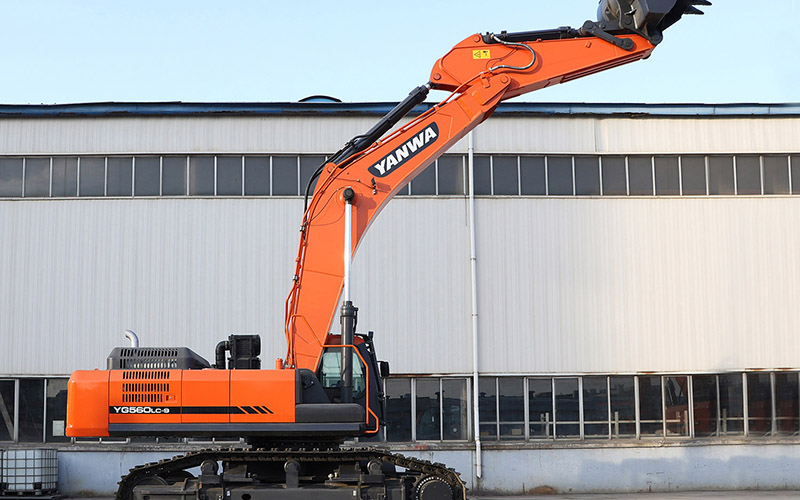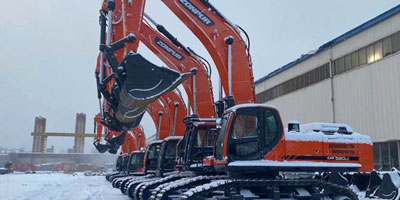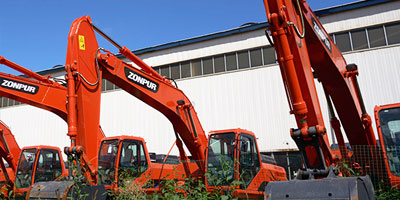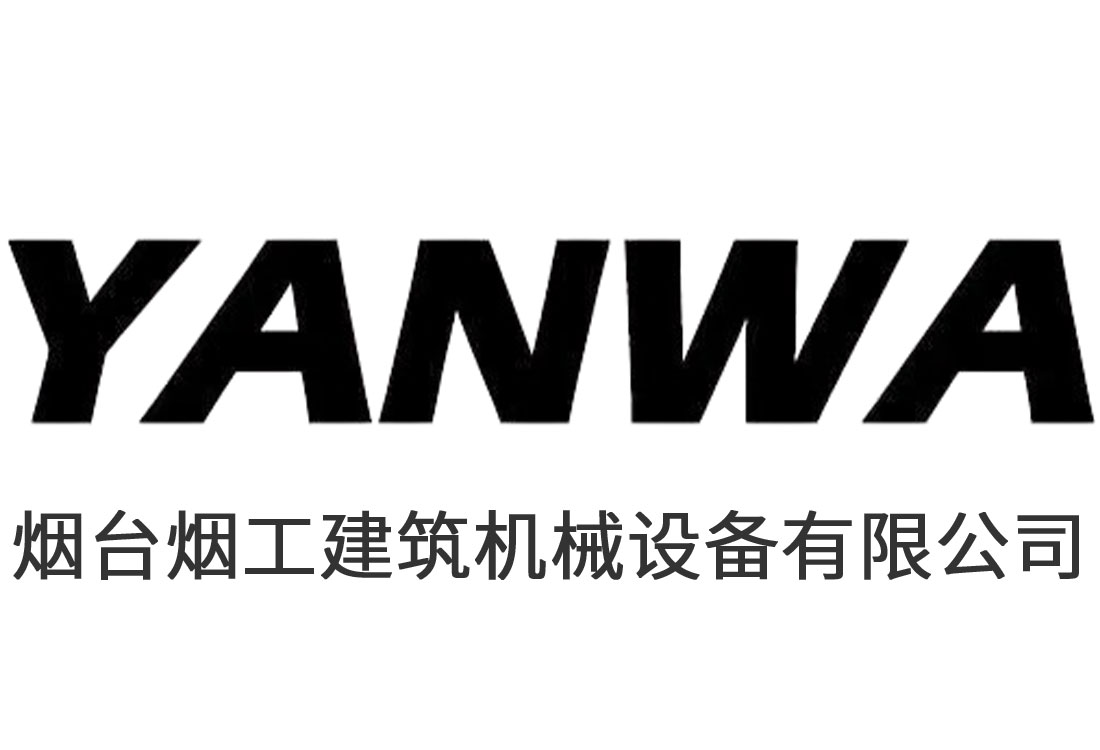Excavator working devices are critical components in construction and earthmoving operations.However,like any machinery,they are prone to malfunctions that can disrupt productivity and safety.Below are some common malfunctions of excavator working devices and their corresponding countermeasures:
1.Hydraulic System Malfunctions
•Symptoms:Insufficient digging force,slow operation,or complete loss of hydraulic function.
•Causes:
◦Hydraulic fluid leakage.
◦Clogged or dirty hydraulic filters.
◦Pump failure or air in the hydraulic system.
◦Wornout seals or damaged hydraulic cylinders.
•Countermeasures:
◦Regularly inspect hydraulic hoses,seals,and connections for leaks.
◦Replace clogged filters and clean the hydraulic reservoir.
◦Bleed the hydraulic system to remove air.
◦Repair or replace damaged seals,cylinders,or pumps.
2.Boom,Arm,or Bucket Cylinder Issues
•Symptoms:Jerky movement,slow extension/retraction,or cylinder failure.
•Causes:
◦Insufficient hydraulic pressure.
◦Wornout cylinder seals or bushings.
◦Misalignment of the cylinder or attachment.
◦Overloading or improper use.
•Countermeasures:
◦Check and maintain proper hydraulic pressure.
◦Inspect and replace worn seals or bushings.
◦Ensure proper alignment of cylinders and attachments.
◦Train operators to avoid overloading or improper use.
3.Swing Mechanism Problems
•Symptoms:Slow or uneven swinging,grinding noises,or complete swing failure.
•Causes:
◦Low hydraulic pressure in the swing system.
◦Worn swing bearings or gears.
◦Foreign objects lodged in the swing mechanism.
◦Hydraulic oil leaks in the swing circuit.
•Countermeasures:
◦Inspect and maintain proper hydraulic pressure.
◦Replace worn bearings or gears.
◦Clean the swing mechanism to remove debris.
◦Repair or replace leaking components.
4.Bucket or Attachment Issues
•Symptoms:Difficulty digging,bucket not closing/opening properly,or attachment malfunction.
•Causes:
◦Worn cutting edges or teeth on the bucket.
◦Misaligned or damaged bucket linkage.
◦Hydraulic cylinder issues affecting the bucket.
◦Incorrect attachment installation.
•Countermeasures:
◦Regularly inspect and replace worn cutting edges or teeth.
◦Align and tighten the bucket linkage.
◦Address hydraulic cylinder issues as needed.
◦Ensure proper installation and compatibility of attachments.
5.Overheating of the Hydraulic System
•Symptoms:High engine temperature,reduced performance,or hydraulic fluid boiling.
•Causes:
◦Overloading or continuous operation without breaks.
◦Clogged radiator or cooling system.
◦Low or degraded hydraulic fluid.
◦Faulty thermostat or water pump.
•Countermeasures:
◦Avoid overloading and allow regular cooling breaks.
◦Clean or replace the radiator and cooling system components.
◦Use the correct hydraulic fluid and replace it as per manufacturer recommendations.
◦Repair or replace faulty thermostat or water pump.
6.Excessive Vibration or Noise
•Symptoms:Excessive vibration during operation or unusual noise from the working device.
•Causes:
◦Loose bolts or fasteners.
◦Wornout components such as bearings,gears,or bushings.
◦Imbalance in the rotating parts.
◦Foreign objects in the working device.
•Countermeasures:
◦Regularly tighten bolts and fasteners.
◦Inspect and replace worn components.
◦Balance rotating parts as needed.
◦Remove any foreign objects from the working device.
7.Electrical System Malfunctions
•Symptoms:Failure of the working device to respond to controls or erratic operation.
•Causes:
◦Damaged or corroded electrical connections.
◦Faulty sensors or control modules.
◦Short circuits or wiring issues.
•Countermeasures:
◦Inspect and clean electrical connections regularly.
◦Replace damaged sensors or control modules.
◦Repair short circuits and ensure proper wiring.
8.Material Buildup or Blockage
•Symptoms:Reduced efficiency,difficulty in operation,or complete stoppage of the working device.
•Causes:
◦Accumulation of dirt,debris,or material in the working device.
◦Clogged hydraulic passages or filters.
•Countermeasures:
◦Regularly clean the working device and remove debris.
◦Clean or replace clogged filters and ensure proper hydraulic flow.
9.Improper Adjustment or Calibration
•Symptoms:Inefficient operation,uneven digging,or improper bucket positioning.
•Causes:
◦Incorrect adjustment of the working device.
◦Misaligned sensors or control systems.
•Countermeasures:
◦Follow the manufacturer’s guidelines for proper adjustment.
◦Calibrate sensors and control systems regularly.
10.Corrosion or Wear and Tear
•Symptoms:Visible damage,reduced structural integrity,or malfunctioning components.
•Causes:
◦Exposure to harsh environmental conditions.
◦Lack of maintenance or protective coatings.
•Countermeasures:
◦Apply protective coatings or paints to prevent corrosion.
◦Regularly inspect and replace worn components.
◦Store the excavator in a dry,sheltered area when not in use.
General Preventive Measures:
•Conduct regular inspections and maintenance as per the manufacturer’s schedule.
•Train operators to use the equipment correctly and safely.
•Use highquality spare parts and fluids recommended by the manufacturer.
•Keep a log of maintenance activities to track recurring issues.
By addressing these common malfunctions and implementing preventive measures,the reliability and lifespan of excavator working devices can be significantly improved.



 +8613356922335
+8613356922335








